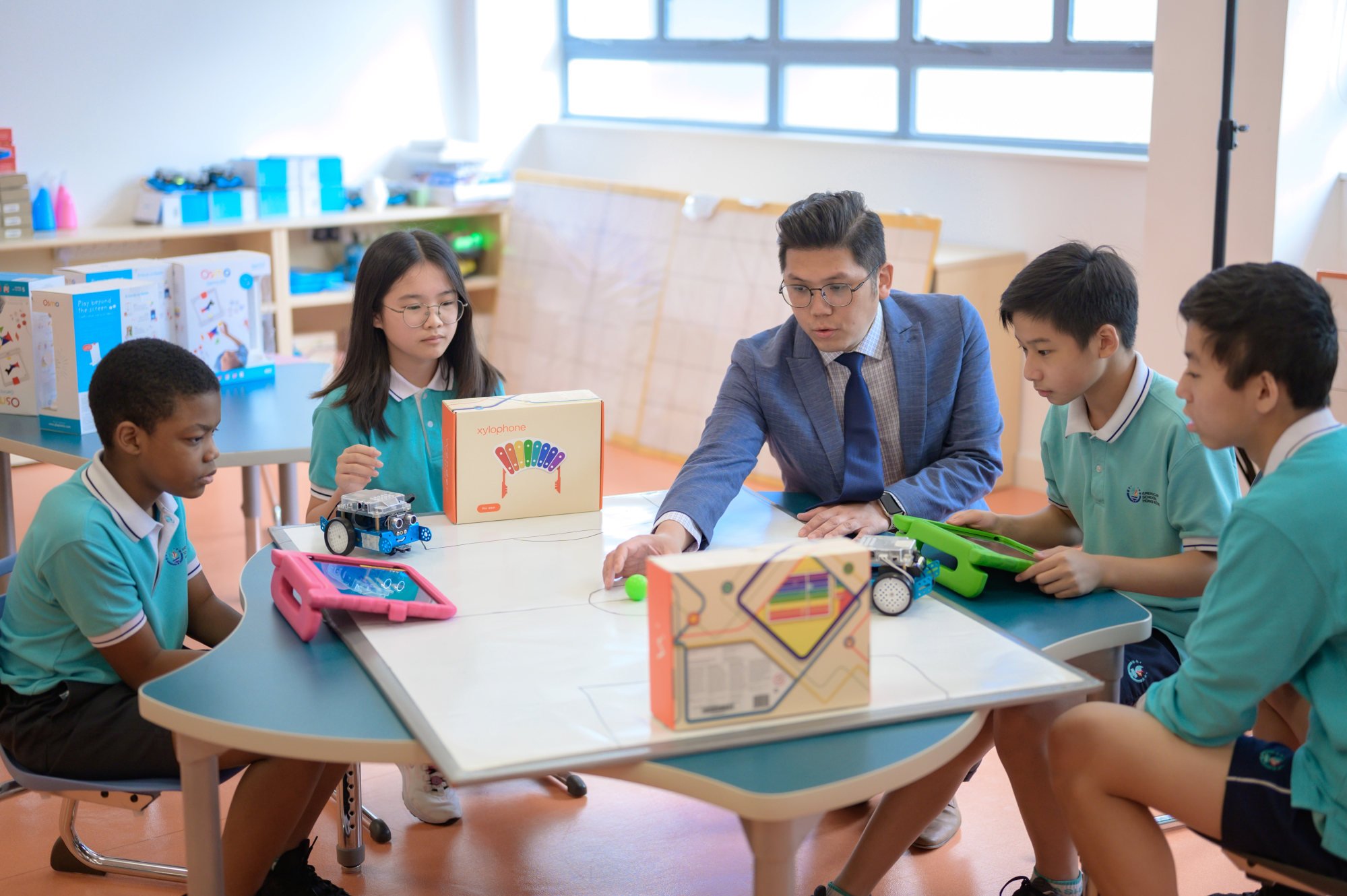
International departures
- In Hong Kong, it isn’t uncommon for families to transition children from the local curriculum to an international curriculum at the start of secondary school
- Besides the language mode, there are differences in teaching style, amount of homework, tests and assessments, as well as cultural perspectives
When Prisci Chui and her husband moved their daughter Jasmine to an international school, she was in primary three. The family had a clear goal of wanting to give a different educational experience to their daughter – one that would challenge her to learn and think in a more flexible and creative way.
“When Jasmine was at local school, she could memorise and give all the right answers during school exams easily,” Chui said. “We made the switch, even though we knew there was a chance her academic results would not be as good,” she continued. In short, Jasmine’s parents felt that training children to memorise was not the best way to nurture their education.
It’s an experience not uncommon in Hong Kong, where for many families, a popular time to transition children from the local curriculum to an international curriculum is at the start of secondary school. Future planning and preparation, exposure to a different learning approach and curriculum, the heavy course load at local schools, as well as the desire to develop English language skills are cited as some of the key reasons for the move.
“Students may want to study abroad for their secondary or tertiary education, and an international curriculum prepares learners for the transition,” said Dr Cora Hui, head of school at Christian Alliance P.C. Lau Memorial International School.
Indeed, international schools offer a very different learning environment. Teaching is more child-centred, aimed at fostering intrinsic motivation with an emphasis on critical thinking and problem solving – both independent and collaborative – with real-life applications. According to Amy Jackman, elementary principal at the American School Hong Kong (ASHK), international schools’ smaller class sizes also tend to foster deeper connections between teachers and students, in turn promoting a higher level of individualised learning.
“Many parents find this approach to teaching more suited to their child’s way of learning,” she said.
Hui concurs, adding that children who have made the move to an international school may find it easier to demonstrate their abilities and develop their potential within a more interactive and experiential learning environment.

Such considerations highlight some of the key differences between the two systems. Educators at both types of school agree that, besides the language mode, there are differences in terms of teaching style, the amount of homework given, how tests and assessments are carried out, as well as cultural perspectives.
Jackman noted that students who transfer from local schools to ASHK find the teaching and learning style one of the biggest adjustments – and her school isn’t alone.
“Since we offer choices in their learning, students are asked to think creatively and they are expected to share their thinking. This can feel very different compared to a school with a more direct instructional approach,” she said.
Hui agreed, adding that in the local system, teachers play a more central role in imparting knowledge. Hong Kong’s international schools have adopted a more inquiry-based approach, whereby teachers act as facilitators, while active participation is expected from students.
“International schools in general expect much more internalised motivation, as opposed to local schools, where students may be waiting to be told what to do,” said Derek Pinchbeck, head of school at International College Hong Kong. “We’re expecting students to take initiative, and that can be a big cultural leap.”
Another key difference is that international schools may not be focused on students giving the right answers all the time, but instead want children to make mistakes so that they can learn from them.
“Making mistakes is an important part of the learning process, and having the confidence to say, ‘I don’t understand’ – this is sometimes a difficult thing to do,” said Pinchbeck.
Students are asked to think creatively and they are expected to share their thinking. This can feel very different compared to a school with a more direct instructional approach
Ann Cha, who switched her children from a local school to HKIS, agreed that this was a real challenge.
“A challenge for my kids at first was learning to ask the right questions – realising that there can be many different ways to solve a problem, and that a lot of times, there is no right or wrong answer,” she said.
Moreover, international schools tend to be amalgamations of people from all over the world, bringing together different perspectives and cultural norms, with a greater emphasis on social and emotional learning as well as mental health and well-being. There also tends to be a greater promotion of diversity and multiculturalism, and greater appreciation for different languages, cultures and perspectives.
“The local curriculum tends to focus on cultural, historical and social aspects specific to the nation, and may emphasise such values, traditions and heritage,” Hui said. To this end, tests and assessments can be remarkably different. Whereas local schools may emphasise high-stakes assessments, international schools tend to use assessments to find out where students are on the learning curve.
“For us, assessments are about finding out how the kids are doing, so we know how to adjust our teaching to move forward – as opposed to judging, or requiring them to give rote knowledge,” Pinchbeck explained. While neither system is perfect, there is agreement that there are benefits in making the move. Laura Cowan, a middle school counsellor at HKIS, cites a global perspective as one of the biggest advantages.
“The world is a diverse place nowadays,” she said. “If families are looking at being a bit more globally minded, then an international school will expose their child to experiences that they might not have had themselves.”

Students are also given flexibility and choices that may align with their interests and strengths – something that can help foster a love of learning and promote individualised educational pathways, Hui added.
However, educators advise parents not to be hasty with the move. Students will invariably struggle with any change, and the change to English as the medium of instruction as well as a different teaching style can be difficult to adjust to – not to mention the social adjustments that must be made.
“As with any move, there will be an element of grief quite naturally, and understandably some instability as you bridge that and then have to form a new identity in a new place,” Cowan said.
It is also not unusual to see that such students experience frustrations and disappointments with their initial academic performance, particularly when it comes to expressing themselves effectively in English. They may find it a struggle to adapt to new academic expectations and the requirements of an international curriculum. Moreover, there is a cultural adjustment in the process – shifting to an international curriculum can result in a disconnection from the local culture, history and traditions.
“You do lose a bit of the culture,” Pinchbeck admitted. ASHK’s Jackman strongly advises parents to consider making the move only after visiting multiple schools and finding out about the school’s curriculum and philosophy. “See our teachers and students in action,” she said.
Pinchbeck also advises parents to sit down and think about why they want to make the move: “You’re coming into a different system – what do you hope to get out of it, and when things get a bit rocky, do the ends justify the means? Make sure you buy into the system.
